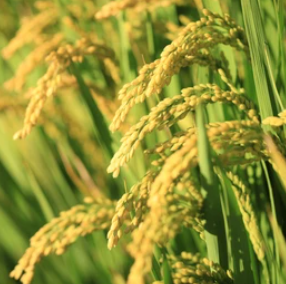Information report for OsLUX;OsPCL1
Gene Details
|

|
Functional Descriptions
- Non-functional alleles of OsLUX extremely extended vegetative phase, leading to photoperiod-insensitive late flowering and great increase of grain yield.
- OsLUX displayed an obvious diurnal rhythm expression with the peak at dusk and promoted rice flowering via coordinating the expression of genes associated with the circadian clock and the output integrators of photoperiodic flowering.
- OsLUX combined with OsELF4a and OsELF3a or OsELF3b to form two ECs, of which the OsLUX-OsELF3a-OsELF4a was likely the dominant promoter for photoperiodic flowering.
- RESULTS: The circadian gene OsLUX encodes an MYB family transcription factor that functions as a vital circadian clock regulator and controls rice heading.
- OBJECTIVES: In this study, we aimed to confirm the role of OsLUX in flowering time regulation in rice.
- OsELF3-1 contributes to the translocation of OsLUX to the nucleus, and a compromised flowering phenotype results upon mutation of any component of the OsEC complex.
- OsLUX was found to be specifically expressed in leaf blades and upregulated by both cold stress and circadian rhythm.
- Furthermore, overexpressing OsLUX upregulated the expression levels of oxidative stress-responsive genes, which improved reactive oxygen species (ROS) scavenging ability and enhanced tolerance to chilling stress.
- Promoter analysis showed that the OsLUX promoter contains two dehydration-responsive element binding (DREB) motifs at positions -510/-505 (GTCGGa) and -162/-170 (cCACCGccc), which indicated that OsDREB1s and OsDREB2s probably regulate OsLUX expression by binding to the motif to respond to cold stress.
- These results demonstrate that OsLUX serves as a positive regulatory factor of cold stress and that overexpressing OsLUX could be used in rice breeding programs to enhance abiotic stress tolerance.
- Overexpressing OsLUX resulted in increased cold tolerance and reduced ion leakage under cold-stress conditions during the seedling stage.
- In contrast, the knockout of OsLUX decreased seedling cold tolerance and showed higher ion leakage compared to the wild type.
- OsLUX Confers Rice Cold Tolerance as a Positive Regulatory Factor.
Functional Keywords
- grain , grain-yield , yield , vegetative , flowering , transcription-factor , flowering-time , leaf , stress , seedling , oxidative-stress , tolerance , cold-tolerance , oxidative , cold-stress , abiotic-stress , biotic-stress , cold , stress-tolerance , breeding , chilling , chilling-stress , reactive-oxygen-species
Literature and News
- Clock component OsPRR73 positively regulates rice salt tolerance by modulating OsHKT2;1-mediated sodium homeostasis . DOI: 10.15252/embj.2020105086 ; PMID: 33347628
- Comparative overviews of clock-associated genes of Arabidopsis thaliana and Oryza sativa . DOI: 10.1093/pcp/pcl043 ; PMID: 17132630
- A clock regulatory module is required for salt tolerance and control of heading date in rice . DOI: 10.1111/pce.14167 ; PMID: 34402093
- LUX ARRHYTHMO Interacts With ELF3a and ELF4a to Coordinate Vegetative Growth and Photoperiodic Flowering in Rice . DOI: 10.3389/fpls.2022.853042 ; PMID: 35401642
- The evening complex integrates photoperiod signals to control flowering in rice . DOI: 10.1073/pnas.2122582119 ; PMID: 35733265
- The clock component OsLUX regulates rice heading through recruiting OsELF3-1 and OsELF4s to repress Hd1 and Ghd7 . DOI: 10.1016/j.jare.2022.08.001 ; PMID: 35940490
- OsLUX Confers Rice Cold Tolerance as a Positive Regulatory Factor . DOI: 10.3390/ijms24076727 ; PMID: 37047700
Gene Resources
- UniProt: Q94DH3
- EMBL: AB206578, AP003277, AP008207
- AlphaFoldDB: Q94DH3
- EnsemblPlants: Os01t0971800-01
- Gramene: Os01t0971800-01
- KEGG: dosa:Os01g0971800
- Orthologous matrix: PQAYHHA
- InterPro: IPR001005, IPR006447, IPR009057
- PANTHER: PTHR31442, PTHR31442:SF21
- SUPFAM: SSF46689
- PROSITE: PS51294
- Gene3D: 1.10.10.60
- OrthoDB: Q94DH3
- SWISS-MODEL: Q94DH3
- eggNOG: ENOG502RIEW
Sequences
cDNA Sequence
- >LOC_Os01g74020.1
CCACCTCGACTCAACTCAACTCGCACAAATATCTTCTCTCTTCTCACCCACCGCCCGATTCTTCGAGTCCCCGATTTGGTTCGGCCTGAAGAAGGGTCTGGGTCTCTCTAGAGAGTGAGTAGCCATCGATTTGAGATTTGATTAGTAATTCGGAGGAGGAGGAACGAGTGGTTTTTTTGATTTGATTTGATTTGATTGAGAAGAAAATCCGAGTATTATGGGCGAGGAGGCGCCGGAGGAGTACGAGCTGGGCGGCGGGGAGGACGAGCGGGTGATGGAGTGGGAGACGGGGCTGCCCGGCGCCGACGAGCTGACCCCGCTGTCGCAGCCGCTGGTGCCGGCGGGGCTGGCGGCGGCGTTCCGCATCCCGCCGGAGCCCGGGCGCACGCTGCTCGACGTGCACCGCGCGTCGGCGGCGACGGTGTCCCGGTTGCGGCGCGCGTCGTCGTCGTCGTCGAGCTCGTTCCCGGCGTTCGCGTCGAAGGGAGCGGGAACGGGAGCGGACGAGGCGGAGTCAGGGGGAGGCGCGGATGGGGGGAACGGGAACACCAACAACAGCAGCAGCAAGAGGGCGCGGCTGGTGTGGACGCCGCAGCTGCACAAGAGGTTCGTGGAGGTGGTGGCGCACCTGGGGATGAAGAACGCGGTGCCCAAGACGATCATGCAGCTGATGAACGTGGAGGGCCTCACCCGGGAGAACGTCGCCAGCCACCTCCAGAAGTATCGCCTCTACGTGAAGCGGATGCAGGGCCTCTCCAACGAGGGCCCTTCCCCCTCCGACCACATCTTCGCCTCCACCCCCGTCCCCCACGCCTCCCTCCACGACCAGGTTCCTTCTCCTTACCACCCCCACCCCCACCACCACTCCTACAACAACGCCGCCTATGCCGCCACCGTCTCCTCCTACCACCACTACCACCACGCCAACCACTGATCCATTCCTTCTCATCATCATTTCATTTCCACATCTATATACCACATACTACTCCATAACGAAGGTGTTTCATCAATAAGAGAAGAGAAGAGAAGAGAATGCTCCCTCAACTGTAAACTCCTAATTCTAATTAAGGGCAAAGTGTATCCATCCATCCATCCACGCTGTTTGTTTGTAGCTGTTGTTAATTGAGCTGGATGCATGACATGTATCTCTATGTACCTACCTGCGTGACAAAGGCATCATGCATATGTATGGTTCCCTTGCAATTTGGGGAATCCAGAAATGATTCATACTTGTGATTCTTGCAATTGTGATGCTCACACTGTACTCTACACATTCAGTTCCATAAAAAACAAAACTAATACTACGAAT
CDS Sequence
- >LOC_Os01g74020.1
ATGGGCGAGGAGGCGCCGGAGGAGTACGAGCTGGGCGGCGGGGAGGACGAGCGGGTGATGGAGTGGGAGACGGGGCTGCCCGGCGCCGACGAGCTGACCCCGCTGTCGCAGCCGCTGGTGCCGGCGGGGCTGGCGGCGGCGTTCCGCATCCCGCCGGAGCCCGGGCGCACGCTGCTCGACGTGCACCGCGCGTCGGCGGCGACGGTGTCCCGGTTGCGGCGCGCGTCGTCGTCGTCGTCGAGCTCGTTCCCGGCGTTCGCGTCGAAGGGAGCGGGAACGGGAGCGGACGAGGCGGAGTCAGGGGGAGGCGCGGATGGGGGGAACGGGAACACCAACAACAGCAGCAGCAAGAGGGCGCGGCTGGTGTGGACGCCGCAGCTGCACAAGAGGTTCGTGGAGGTGGTGGCGCACCTGGGGATGAAGAACGCGGTGCCCAAGACGATCATGCAGCTGATGAACGTGGAGGGCCTCACCCGGGAGAACGTCGCCAGCCACCTCCAGAAGTATCGCCTCTACGTGAAGCGGATGCAGGGCCTCTCCAACGAGGGCCCTTCCCCCTCCGACCACATCTTCGCCTCCACCCCCGTCCCCCACGCCTCCCTCCACGACCAGGTTCCTTCTCCTTACCACCCCCACCCCCACCACCACTCCTACAACAACGCCGCCTATGCCGCCACCGTCTCCTCCTACCACCACTACCACCACGCCAACCACTGA
Protein Sequence
- >LOC_Os01g74020.1
MGEEAPEEYELGGGEDERVMEWETGLPGADELTPLSQPLVPAGLAAAFRIPPEPGRTLLDVHRASAATVSRLRRASSSSSSSFPAFASKGAGTGADEAESGGGADGGNGNTNNSSSKRARLVWTPQLHKRFVEVVAHLGMKNAVPKTIMQLMNVEGLTRENVASHLQKYRLYVKRMQGLSNEGPSPSDHIFASTPVPHASLHDQVPSPYHPHPHHHSYNNAAYAATVSSYHHYHHANH*